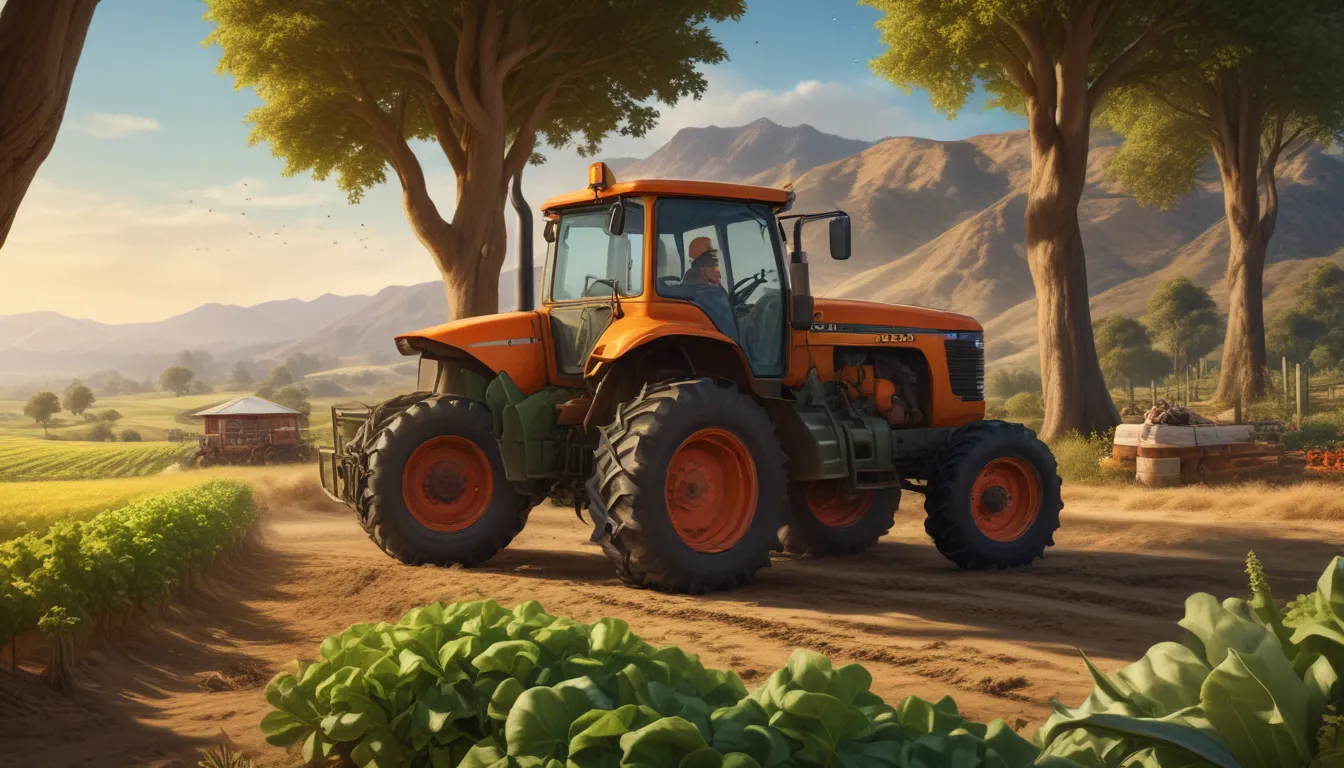A Note About Images: The images used in our articles are for illustration purposes only and may not exactly match the content. They are meant to engage readers, but the text should be relied upon for accurate information.
Have you ever marveled at the abundance of fresh produce California offers to the world? California’s agriculture isn’t just a source of food; it’s a pillar of the state’s economy and cultural identity. From the verdant vineyards of Napa Valley to the sprawling almond orchards in the Central Valley, the Golden State’s agricultural prowess is truly remarkable. But what makes California stand out in the agricultural landscape? How does it manage to produce more than a third of the country’s vegetables and two-thirds of its fruits and nuts? Let’s delve into the fascinating world of California agriculture and uncover the secrets behind its success. Get ready to be amazed by the wonders that grow in the Golden State!
Unveiling California’s Agricultural Dominance
California’s agricultural sector stands as a formidable force, playing a crucial role in both the state and national economies. Blessed with a diverse climate and fertile soils, California yields an impressive array of fruits, vegetables, nuts, and commodities. Here are some captivating facts that shed light on the significance and magnitude of agriculture in the Golden State.
-
California leads the nation in agriculture, generating upwards of $50 billion in annual revenue. This staggering figure underscores the state’s pivotal role in sustaining not only its citizens but also numerous others.
-
The state produces nearly a third of the country’s vegetables and two-thirds of its fruits and nuts. California’s varied climate allows for a rich tapestry of crops to thrive, showcasing its agricultural diversity and productivity.
The Kaleidoscope of California Crops
-
California boasts over 400 different crops, illustrating the state’s remarkable agricultural diversity. From almonds and artichokes to grapes and garlic, the variety of produce grown here is astounding.
-
Almonds reign supreme among California’s crops, accounting for about 80% of the world’s supply. This humble nut has become a staple export commodity, highlighting California’s global impact in the agricultural realm.
-
Grapes hold a crucial position in California’s agricultural landscape, with the state being the largest wine producer in the U.S. The vineyards of California are renowned worldwide, making substantial contributions to the wine industry.
Water: The Lifeblood of California Agriculture
-
Agriculture consumes approximately 40% of California’s water, emphasizing the sector’s heavy dependence on this precious resource. Sustainable water management practices are essential for the longevity of California’s agriculture.
-
Innovative irrigation techniques have enabled California farmers to mitigate water challenges, maintaining or even enhancing crop yields. These advancements balance the needs of agriculture with environmental conservation efforts.
The Economic Ripple Effect of California Agriculture
-
The agricultural industry in California supports a plethora of jobs, spanning from farm work to processing and distribution. This employment chain underscores agriculture’s pivotal role as a key economic driver in the state.
-
California’s agricultural exports surpass $20 billion annually, bolstering not only the state’s economy but also solidifying its status as a global agricultural powerhouse.
Navigating Through Challenges and Seizing Opportunities
-
Climate change poses a significant threat to California agriculture, impacting crop yields through rising temperatures and shifting precipitation patterns. Farmers are embracing resilient crop varieties and water-saving technologies to adapt to these changes.
-
The demand for organic produce is on the rise, with California spearheading this trend. The state leads the nation in organic farm sales, reflecting the growing consumer preference for sustainably grown food.
-
Technological innovations in agriculture, such as drone surveillance and precision farming, are revolutionizing California’s farming landscape. These advancements enhance efficiency, reduce environmental impact, and pave the way for a more sustainable future.
-
Urbanization and land use transformations present ongoing challenges to California agriculture. Preserving farmland and supporting the next generation of farmers are critical for the sector’s continued vibrancy.
California’s agricultural tapestry epitomizes innovation, resilience, and diversity. As it confronts future challenges, its enduring success hinges on striking a balance between productivity and sustainability.
A Fresh Outlook on California’s Agricultural Riches
California’s agricultural abundance is a testament to its diversity and vitality, playing a pivotal role not just locally but globally. From almonds that dot vast fields to vineyards producing world-class wines, the state’s agricultural output is both substantial and indispensable. California’s farms and orchards aren’t merely sources of sustenance; they are integral contributors to the economy, culture, and environment. Understanding these aspects fosters a deeper appreciation for the land, the farmers, and the processes that nourish us. The next time you savor a California-grown delicacy, ponder the innovation, dedication, and resources that made it possible. Let’s continue to champion and cherish California’s agricultural legacy, ensuring its prosperity for generations to come.
Frequently Asked Questions
Q: What crops is California renowned for?
– California shines in cultivating almonds, grapes, lettuce, strawberries, and tomatoes, leading the charge in producing these flavorful delights.
Q: How does California’s climate favor its agriculture?
– With diverse microclimates from sunny valleys to coastal breezes, California provides an ideal backdrop for a myriad of crops to flourish.
Q: Are there unique agricultural gems from California?
– Absolutely! California surprises with exotic treats like dates, kiwifruits, and pomegranates, alongside olives and artichokes not commonly found elsewhere in the U.S.
Q: How vital is California’s agriculture to the U.S. economy?
– California’s agricultural output significantly contributes to the overall U.S. agricultural income, ensuring food security and sustaining economic growth.
Q: What challenges does California agriculture confront?
– Despite its sunny disposition, California grapples with water scarcity and climate change, necessitating innovative solutions and sustainable practices.
Q: How can one support California agriculture?
– Opting for locally-grown produce and engaging with farmers’ markets or CSA programs directly supports California’s farmers and economy.
Q: What role does technology play in California’s agriculture?
– Technological advancements like drones and smart irrigation systems are revolutionizing California farming practices, enhancing efficiency and sustainability.
Our dedication to delivering informative and engaging content is at the core of our work. Each fact shared on our platform is contributed by users like you, ensuring a diverse range of insights and information. Our team of editors meticulously reviews each submission to maintain the highest standards of accuracy and reliability. Trust in our commitment to delivering quality content as you explore and learn with us.






